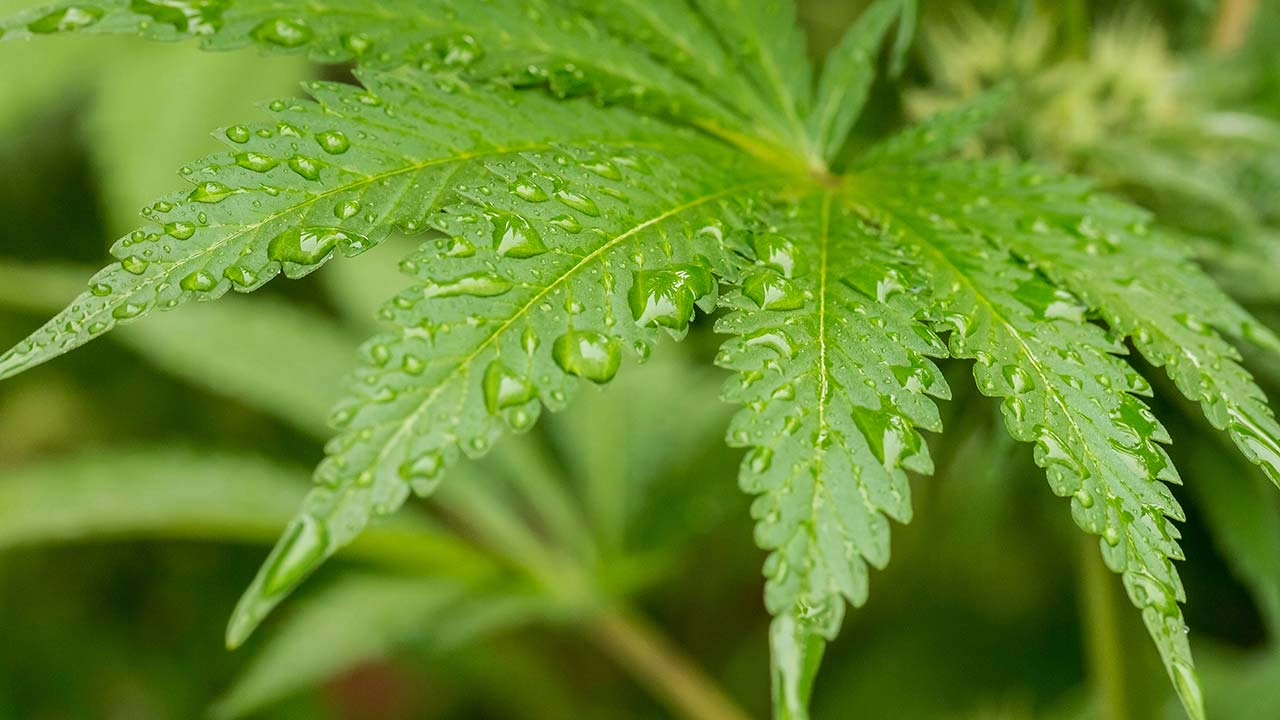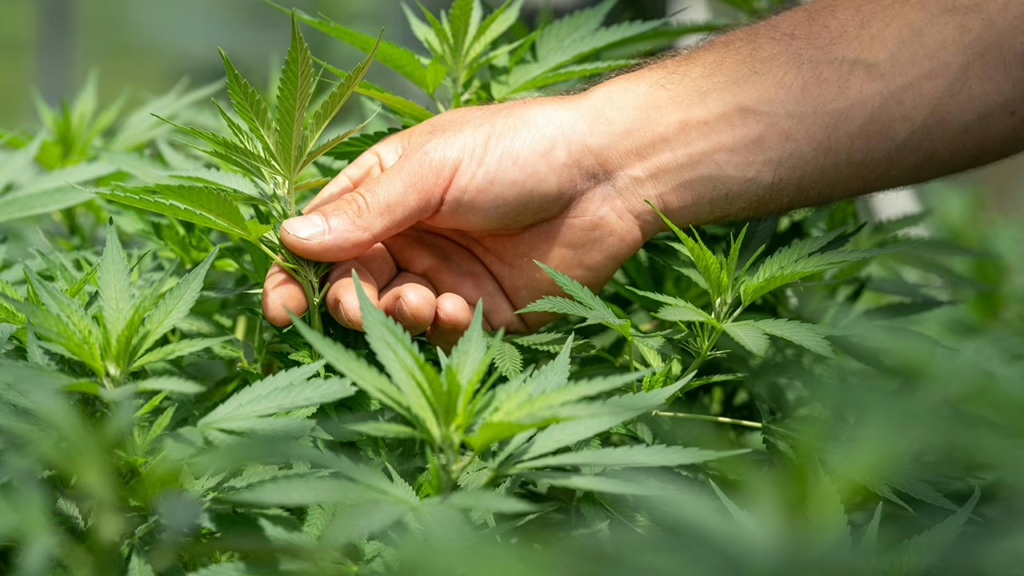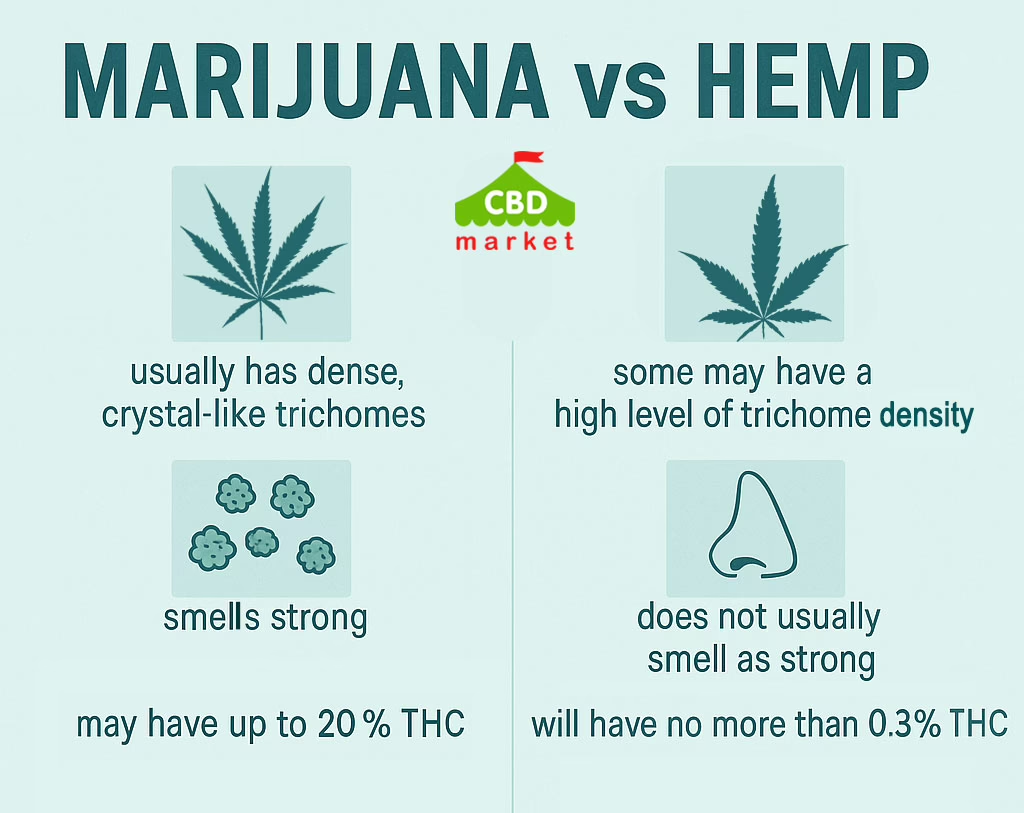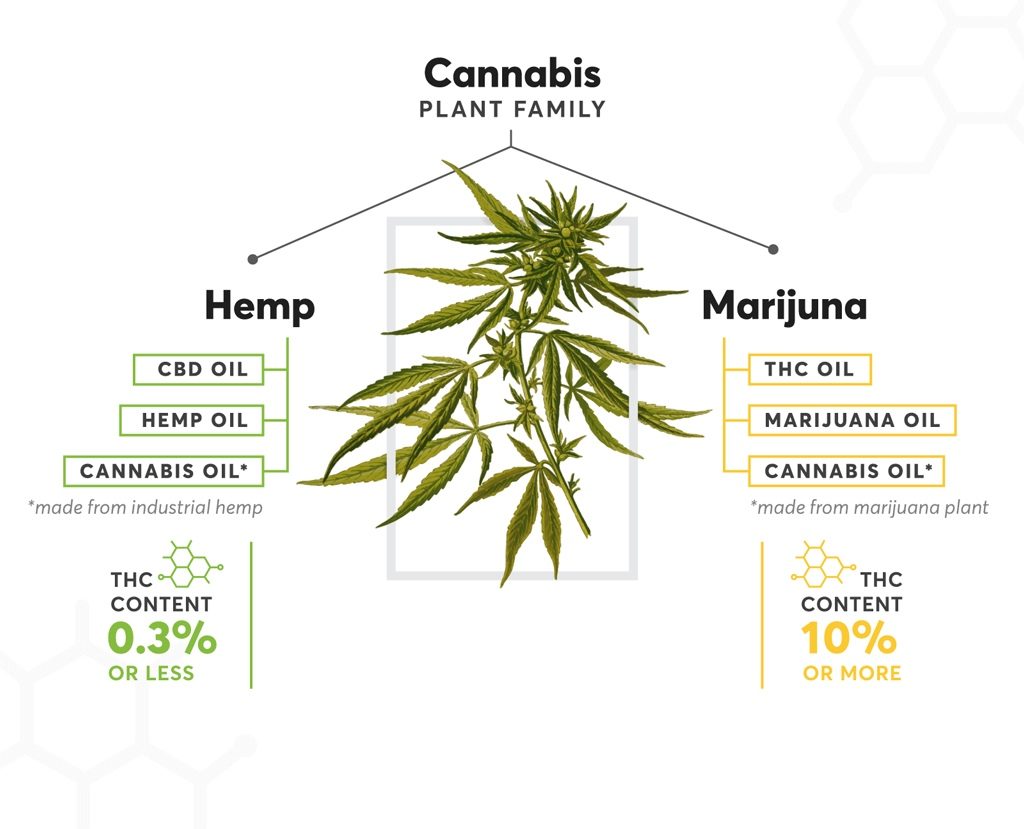How to Identify a Hemp Plant
Summarize

There is still a lot of confusion concerning the difference between hemp vs. marijuana plants. For this reason, many consumers have not tried CBD oil because they think the extract comes from marijuana plants and believe CBD is psychoactive like THC. The truth is that the industrial hemp plant and the marijuana plant are in the same species, but they are cultivated differently. There is more than one difference between hemp and cannabis plants, including the physical characteristics and amount of THC.

TL;DR (Too Long; Didn’t Read):
The hemp and marijuana plants are in the same species, but industrial hemp is cultivated to have no more than 0.3% THC. The plants have different characteristics, making them distinguishable. Hemp grows taller, with palmately compound leaves, a light green color, and a mild, earthy odor. There are female and male hemp plants, but farmers prevent pollination, allowing the female plants to focus their energy on producing flowers with high amounts of CBD instead of seeds. Marijuana is a much shorter plant that is covered with crystal-like trichomes, a rich source of THC. The only proper way to tell the difference between hemp and cannabis is through lab testing for THC.
Table of Contents
Hemp vs. Marijuana
Hemp and marijuana are both in the cannabis sativa plant species, but there are many differences.
- Marijuana and hemp have different chemical compositions.
- Hemp is legally defined as having no more than .3% THC by dry weight, whereas marijuana has no THC limit legally specified.
- Hemp is nonpsychoactive, and marijuana is psychoactive.
- The plants are different cultivars, meaning they are produced by selective breeding or cultivation.
- Marijuana is primarily used as a medicinal or recreational drug.
- Hemp is used in a broader range of products compared to marijuana, i.e., CBD oils, foods, beverages, fabrics, textiles, cosmetics, dietary supplements, etc.
- Hemp plant stalks, stems, seeds, leaves, and flowers are used in various products, while the flowers or buds of marijuana are the main plant part used.

Physical Characteristics of a Hemp Plant
The hemp plant grows taller than marijuana plants, reaching up to 16 feet. Hemp plant identification is crucial for government officials, such as agricultural inspectors responsible for ensuring that hemp farmers adhere to the law. What does a hemp plant look like? The following are the physical characteristics of the hemp plant.
- Slender, upright stalk
- Stalk with a hollow center that becomes fibrous or woody as the plant ages
- Leaves that are palmately compound with 5-9 serrated leaflets that emerge from a central point
- Leaves are narrow, long, and have a sharp-toothed appearance
- It is dioecious, meaning female and male flowers grow on different plants
- Seeds are smooth and oval-shaped with a hard shell
- Has a taproot that grows down as much as 10 feet
- Contains less than .3% THC
- Has a light green color
- Has a mild, earthy odor

Male vs. Female Hemp Plants
There are both female and male hemp plants, and they appear differently. Male hemp plants have small, round pollen sacs at nodes, the points where leaves and branches emerge. The female hemp plants have hair-like pistils called stigmas that grow on the buds.
In nature, male plants pollinate female plants. This is undesirable for CBD producers because pollinated female flowers are of lower quality than those that are grown without pollination. Female plants that produce seeds after pollination are less valuable because they have allocated their energy to grow seeds rather than flowers, resulting in plants with lower cannabinoid levels.
The hemp plants (industrial hemp) grown for CBD extracts are asexually propagated female plants that are developed with transplants, clones, and cuttings. Chemicals or hormones are applied to female plants, which causes them to develop male flowers. The male flowers produce genetically female pollen, i.e., they carry only female chromosomes. The pollen produces “feminized seeds,” which result in the growth of only female plants. High-CBD cultivated varieties have unpollinated female flowers and the highest concentration of medicinal compounds.
It should be mentioned that there are cannabis plants called hermaphrodites. They have both female stigma and male pollen sacs. Though rare, they do exist, and hemp farmers remove them like they do male plants, so the female plants are not pollinated and put their energy into producing seedless flowers.
Common Misidentifications
The most common misidentification is that marijuana and hemp are different plant species, when they are both cannabis sativa. Also, many people still believe that industrial hemp has a psychoactive THC level, when the law limits the THC to 0.3% THC or less.
Sometimes, it may be challenging to identify hemp versus marijuana because farmers are developing a wide range of cultivars, and the visual differences between hemp and marijuana are narrowed. The same is true for trichomes. Marijuana usually has dense, well-defined, crystal-like trichomes, but some hemp may also have a high level of trichome density. Hemp plants usually do not smell as strongly as marijuana, but even that may not be true.
Marijuana and hemp can have a very similar appearance. The only proper way to differentiate the two cannabis plants is to test the THC level. Hemp will have no more than .3% THC, while marijuana may have up to 20%.
How Can I Tell the Difference Between Hemp and Marijuana?
Cannabis sativa identification as hemp or marijuana is not always easy unless you are familiar with their characteristics. Once you know what to look for, it is easier to tell the difference between hemp and cannabis.
They may look similar at first glance, but the marijuana leaf characteristics are very different from the hemp leaf characteristics. The marijuana leaves are more closely spaced and broader, and the marijuana plant has larger flowers. The marijuana leaves, flowers, and buds are covered in a sticky coating of trichomes. Trichomes are glandular, mushroom-shaped, oily, and resin-like, and have a glassy appearance. They create high levels of cannabinoids, including THC, CBD, THCA, CBN, etc., terpenes, and cannabinoids. The hemp plant has trichomes, but they are less pronounced and cultivated to produce lower cannabinoid amounts, especially THC.
Marijuana plants are more bush-like compared to hemp plants, growing 3-6 feet as opposed to the hemp plant, which can reach 16 feet. Marijuana has a darker green color and a stronger odor. Also, marijuana has a fibrous root system and grows best in a controlled environment.
Avoid the Confusion with Knowledge
All consumers can learn how to identify hemp plants, but the real value in this information lies in understanding the labeling on hemp-based products. For example, hemp oil products are primarily made with hemp oil extracted from hemp seeds. Hemp seeds have very little THC, ranging from 0.06 to 5.91 μg/g. The .06 μg/g converts to 1/1,000,000 g/g. This is a small enough amount to say hemp seeds are THC-free.
To make CBD products, the CBD is extracted from industrial hemp. A high-quality extract is derived from the hemp plant’s aerial parts, including the leaves, flowers, and buds. The highest concentration is found in the flower bracts, which contain the glandular trichomes. Mature female plants are the preferred hemp plants for CBD extraction because they produce higher levels of cannabinoids. When male plants pollinate female plants, they form seeds. CBD producers take extra care to keep female hemp plants away from male plants.
Sources
- https://www.congress.gov/crs-product/R44742
- https://extension.colostate.edu/topic-areas/agriculture/industrial-hemp-reemergence-of-an-alternative-crop-in-the-u-s-0-311/
- https://news.ncsu.edu/2019/02/is-hemp-the-same-thing-as-marijuana/
- https://pubmed.ncbi.nlm.nih.gov/31786513/
- https://www.sciencedirect.com/science/article/abs/pii/S0926669019310921
Share this post


0